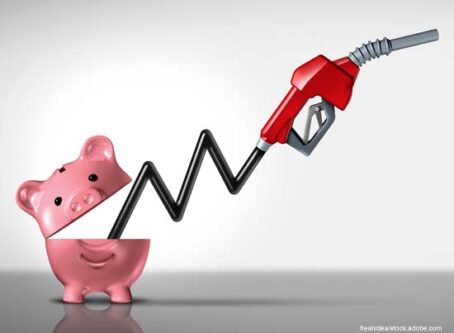Fuel tax rate changes take effect Jan. 1
States all over the map are ringing in the new year with changes in their fuel tax rates either due to automatic adjustments or the expiration of fuel tax holidays.
About a dozen states applied changes over the past year. Rate changes range from a 9-cent diesel tax increase in Connecticut, a 2.8-cent-per-gallon increase for gas and a 2.1-cent-per-gallon increase for diesel in California, a 2.5-cent fuel rate increase in Missouri, and a penny dip for gas and diesel rates in New Jersey.
As of Jan. 1, changes of about one penny are expected in states that include Florida, Michigan, Nebraska, and West Virginia. The changes are based on automatic adjustments.
Elsewhere, scheduled rate increases begin at a couple of cents.
Connecticut
Connecticut Gov. Ned Lamont acted earlier this year to implement a nine-month gas tax holiday. The diesel rate was unaffected.
At the first of the year, the state will begin phasing back into place the 25-cent excise tax on gas.
Starting Jan. 1, the tax will be set at 5 cents per gallon. Additional nickel increases will take effect monthly until the full 25-cent rate resumes May 1.
Georgia
A planned increase in Georgia’s fuel rates could be delayed.
Since March, Gov. Brian Kemp has acted to waive fuel excise rates.
The latest extension of the tax holiday has a Jan. 10 sunset date.
At that time, the 29.1-cent gas tax is scheduled to increase by 2.1 cents to 31.2 cents. The 32.6-cent diesel rate is scheduled to increase by 2.4 cents to 35 cents.
Illinois
A cost-of-living adjustment takes effect the first of the year in Illinois. The rate increases were set for July 1, but Gov. J.B. Pritzker delayed them for six months due to rising inflation and high fuel prices nationwide.
As a result, the state excise rates on gas and diesel will increase 3.1 cents to 42.3 cents and 49.8 cents.
Kentucky
An upcoming fuel tax rate increase in Kentucky is less certain. Gov. Andy Beshear acted over the summer to freeze the state’s fuel tax rates.
Statute links the state fuel taxes to the average wholesale price of fuel. As a result, when the price goes up, the tax rate follows.
The governor filed an emergency regulation to prevent a 2-cent increase to the state’s 26-cent tax rate and the 23-cent diesel rate set to take effect on July 1.
The action has a mid-January expiration date.
New York
A seven-month fuel tax holiday in New York is scheduled to end Dec. 31.
The Empire State charges about 33 cents per gallon for gas and diesel. There are multiple components that make up the state’s fuel tax collection.
There is an 8-cent excise tax and a 17.3-cent petroleum business tax. Additionally, there is an 8-cent state sales tax.
Gov. Kathy Hochul acted this spring to suspend collection of the excise tax and state sales tax through the end of the year. The action trimmed fuel rates by 16 cents per gallon.
The New York Department of Taxation and Finance has made available information for truck drivers on IFTA and the fuel use tax.
North Carolina
On Jan. 1, an inflationary adjustment will take effect in North Carolina.
The 38.5-cent fuel excise rate on gas and diesel will increase by 2 cents to 40.5 cents.
Pennsylvania
The Keystone State’s fuel excise tax also is on the way up.
Starting the first of the month, Pennsylvania’s 57.6 gas tax rate will increase to more than 61 cents per gallon. The 74.1-cent diesel rate will climb 4.4 cents to 78.5 cents.
Automatic adjustments
Automatic adjustments are set up in multiple ways. One method is to calculate the tax by percentage of fuel price at the wholesale level. A related method is to use a combination of percentage of fuel price and a flat excise tax. Another method is to link fuel prices to inflation, such as the consumer price index.
Some states with automatic adjustments are implemented annually while others change more frequently.
The Transportation Investment Advocacy Center reports there are 22 states with variable-rate state fuel taxes.
Rate changes are calculated each month, quarterly, every six months, annually, or every two years.
The state of Indiana updates its fuel rates each month. In Vermont, fuel rates are updated quarterly. Tax rates in Rhode Island are revised every two years. Nebraska revises its tax rate every six months.
Additionally, annual updates are made in Arkansas, California, Connecticut, Florida, Georgia, Illinois, Indiana, Kentucky, Maryland, Michigan, New York, North Carolina, Pennsylvania, Utah, Virginia, and West Virginia. LL









